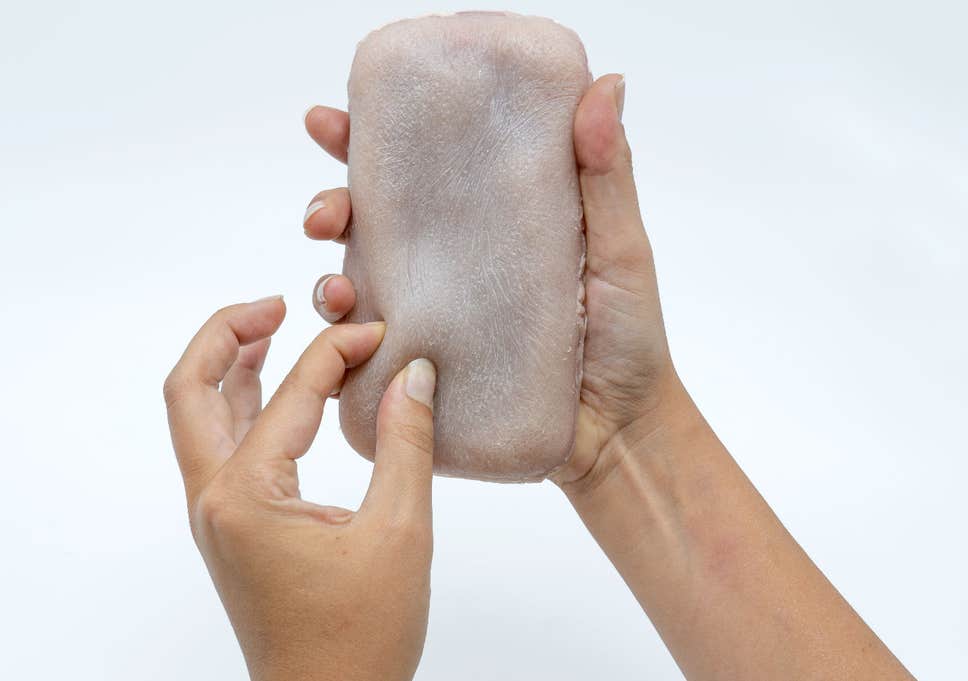Researchers have developed a new interface that will allow phones, wearables or computers to “feel” sensations. Sensation such as tickling, caressing, twisting and even pinching just as the human skin does. The Artificial Skin – Human Touch will now allow you to tickle or pinch your Smartphone.

In a case study, the researchers created a phone case, computer touchpad and smartwatch. Also to demonstrate how touch gestures on the Skin-On interface. That can convey expressive messages for computer-mediated communication with humans or virtual characters.
Artificial Skin – Human Touch interface, imitate human skin in appearance but also in sensing resolution. The researchers also demonstrated that tickling the skin can generate a laughing emoji on a phone. Also while tapping it can create a surprising emoji.
One of the main use of smartphones is to mediate communication. All by using text, voice, video, or a combination, said the lead author of the study Marc Teyssier from Telecomm ParisTech in France.
“We have implemented a messaging application where users can express rich tactile emotions on artificial skin. The intensity of the touch controls the size of the emojis. A strong grip conveys anger while a tickling on the skin displays a laughing emoji and tapping creates a surprised emoji” Marc Teyssier said.
Scheduled to present at the 32nd ACM User Interface Software and Technology Symposium. It will be held in New Orleans in the US from October 20-23 takes touch technology to the next level.
The researchers adopted a bio-driven approach to developing the multi-layer and silicone membrane. This is made up of from a surface textured layer and an electrode layer of conductive threads and a hypodermis layer.
The interface is more natural than a rigid casing. It can also detect a plethora of gestures made by the end-users.
As a result, the artificial skin allows devices to ‘feel’ the user’s grasp pressure and location. It can also detect interactions such as tickling, caressing, even twisting and pinching.
“This is the first time we have the opportunity to add skin to our interactive devices. Perhaps the idea is a bit surprising, but the skin is an interface we are highly familiar with so why not use it and its richness with the devices we use every day?” said the University of Bristol Professor – Anne Roudaut, supervisor of the research.
“Artificial skin has been widely studied in the field of robotics but with a focus on safety and sensing or cosmetic aims. This is the first research we are aware of that looks at exploiting realistic artificial skin as a new input method for augmenting devices,” Marc Teyssier said.
